DAY 36 - A VISIT TO LINDESNES FYR - Sunday 29th May, 2022...
Today we are venturing out to explore some of the coastline of this beautiful country. We had read quite a bit about Lindesnes Fyr before arriving in Norway as as it was only about a 30 to 40 minutes drive from where we are staying we plan on packing a picnic lunch and heading their to explore the lighthouse....
We enjoyed another leisurely breakfast together as a family with Pete making us some french toast for breakfast. Maria used her flair to bright up our faces by putting a smile on our toast. It definitely went down well with the boys... |
| Family breakfast.. |
With two young children around, and after Poppy playing with them in the gravel heap the previous day, Maria wanted to put on a load of washing and hang it out before we headed off. Meanwhile Pete and I packed a picnic lunch whilst Poppy took the boys outside to enjoy some fresh air.
 |
| I love these photos of Steve with Theo |
 |
| He loves his Poppy |
 |
| Just the best photos and I am so glad I got to capture it.. |
Oh my goodness as I looked out the window, I managed to get the most wonderful photos of Steve and Theo together. They were having a wonderful time together. Theo is such an inquisitive child and has lots of questions, always wanting to know how things work, or about animals or anything he comes across and he especially loves chatting to his Poppy. One of his favourite words is "WHY".
By the time Maria had the washing sorted and we had packed up lunch to take with us it was morning tea time, so we decided to enjoy our deck once again and have a quick cuppa and feed the boys some morning tea before taking off otherwise I am sure they would have been hungry before we had got there...
 |
| Our morning cuppa on the deck |
 |
| cleaning up the last of the anzac biscuits. |
 |
| As always we cannot get enough of our wonderful view.. |
 |
| Our river view... |
I am so very thankful and feel so very blessed that we are able to afford to visit our beautiful family overseas and spend these lovely holidays together. There are many families that really struggle with distance with their kids and can't visit like they would like too. It does make it hard though because we just love these beautiful boys and having to leave them again in a couple of weeks is going to be so hard. We will definitely miss them.
How could you not love a gorgeous face like this little one.
 |
| Our beautiful Theo |
I'm so thankful we managed to get this shots of him as he is not always forth coming when we want to take photos of him.
Our house here is situated right next to a mini power house which uses the river to generate electricity
 |
| The mini power house which is situated right next to where we are staying in Norway... |
 |
| Our Norwegian Holiday house. |
Where we are staying is quite a rural area in Norway, although in saying that, we noticed the absence of farming over here, they seem to grow lucerne for the cows and we did notice a small plot being dug up for potatoes but it was pretty small so would have only been for use within the community there...
Our route this morning was talking us down to Vigmostad, where we had to stop and wait for Pete and Maria as they had to make a quick toilet stop for Theo who didn't need to go before we left but five minutes down the road needed to go to the loo. We stopped next to a small childcare centre and waited there. There are lot of little villages in Norway with just a handful of houses, all very pretty, all made of timber and often either white or a red brown colour...
 |
| We came across this is Vigmosted |
The drive in Norway is alwasy stunning whether you are on the main highway or the country roads. The background is either always lush green, grass, tall pine like trees, blue of the water or sheer rock and honestly we could never get enough of it...
Rather than head towards Mandal, we had to turn off and head to Vigeland, which is a village also situated on the river Audna, which is the same river than runs past the house we are staying in. Vigeland is quite a historical village having got it's name for the very historic Vigeland farm which was located where the village is now. The farm was first documented in 1390 and it's name when translated means "Viking land".
It's other claim to fame is that the famous Norwegian sculptor Gustav Vigeland and his brother Emanual along with his family all originally came from Vigeland. The brothers both lived for a time with their grandparents on a farm called "Mjunebrokka" in Vigeland. Both of Gustav Vigeland's parents were buried in the Valle Church cemetery.
From Vigeland you turn onto road 460. The descent i hard to miss, the red and white lighthoue stands in the middle of the roundabout in Vigeland, albeit as a model of the southern original. From here the next 28 kilmoters are mainly along the nearby North Sea coast, past many a small fishing village which temps you to stop along the way.
If we thought the scenery was beautiful before this was absolutely splendid. My gosh, the houses were built right down onto the water's edges with boat sheds on the water much the same as we have garages or carports at home. It seems everyone has a boat and a shed built out onto the water to house it..
 |
| Beautiful drives along the water's edge... |
 |
| The houses all have boat sheds built right out onto the water.. |
 |
| Typical countryside in Norway... |
 |
| House built right out to the water's edge.. |
As we got closer to Lindenes Fyr, we noticed the countryside changed considerably with masses amount of rocks everywhere. In fact the rocks where cut to make way for the road to run through..
 |
| Very rocky countryside |
As soon as we arrived we were quietly enchanted by this lively and original landscape, the rough coast formed by wind and waves and of course the red and white lighthouse which is Lindenes Fyr.
 |
| Welcome to Lindenes Fyr |
Lindesnes is the southernmost point of Norway, it's the end where the mainland sinks into the sea. The name Lindesnes is derived from the verb "lioa"in Old Norse, which means "go to an end". Lindesnes had the first lighthouse in Norway due to it's vital importance for navigation. Being on the southernmot point of the Norwegian mainland it was a crucial landmark. When ailing to the Skaw and into the Cattegt the ships had to steer well clear of the Danish coast where shallow waters and treacherous currents have led to many wreck. Much of the shipping therefore sailed close to the shore of southern Norway where there were calm harbours and safe landfalls. There is a spectacular view from the lighthouse, especially in a heavy sea. The lighthouse is manned, and in the summer it is open to the public from 8am in the morning until 10pm at night...
 |
| Wildflowers growing in abundance |
 |
| There were picnic tables scattered around |
 |
| Maria and I found a table and organised our lunch |
By the time we arrived, it was lunch time. We figured that it would be
best to have lunch first before we went exploring. Pete, Steve and Theo
explored a few of the channels near where we had found a picnic table
whilst Maria and I organised lunch for us all. The area was beautiful
and quite busy with lots of folk out enjoying the beautiful weather just
like us...
Whilst the weather was beautiful back at our holiday house and for once we were in shorts and T Shirts, but at the coast, it was a whole different story. The wind was blowing a gale and the wind was actually quite cold so we all had to don our coats again...
 |
| Our beautiful Elliot |
 |
| Our little boy - he is so cute... |
Whilst the weather was beautiful back at our holiday house and for once we were in shorts and T Shirts, it was a whole different story here on the coast. The wind was blowing a gale and the wind was actually quite cold so we all had to don our coats again...
Lindesnes Lighthouse though is in a very exposed location. When bad weather hits with full force, the waves can reach a height of 25 meters, and gusts of wind can easily throw you off balance. Because of this and the dangers of the slippery rocks, tunnels and channels have been built into the rock so that the lighthouse keepers can move around safely when the weather is severe. These were some of the channels that Pete and Theo were exploring whilst they were waiting for lunch..
 |
| Checking out some of the walk ways through the rocks.. |
 |
| Pete and Theo exploring |
 |
| Tunnels through the rock to the lighthouse... |
 |
| There are tunnels through the rocks as well. |
After lunch we set off to explore and climb to the lighthouse at the top of the rocks. This lighthouse has quite a bit of history. There was a cost to enter the lighthouse precinct. It wasn't terribly expensive probably equated to somewhere between $10 - $15Aus. This was very reasonable for all that was available. The ticket included access to a number of experiences, outdoors (including a visit inside the lighthouse and climbing to the top) and indoor exhibitions, film showings, gallery of local artist, cafe and beverage and the museum shops. They were very trusting, as there was only a machine to pay at and no one checking that you had tickets at all as you entered the precinct and climbed the lighthouse.
As you climb up to the cape, we passed a couple of buildings, two of which held exhibitions on the history of the lighthouse. More about them later..
 |
| Information Centre at Lindesnes Fyr... |
 |
| The Cafe and Display centre with Theatre built straight in under the rock.. |
Once again, the art of architecture in Norway becomes visible, which repeatedly combines rugged nature, tradition and modernity in an impressive way. In this case in the rock hall with its south-facing glass facade, actually built into the rock in the north.
In 2004, the Mountain Hall was built into the rock face below the lighthouse. This amazing building houses a cinema, exhibitions and a cafe. The complex also comprises a museum shop, a restaurant and a gallery. The cinema which is built into the rock and has rock walls shows an interesting film about lighthouses. We found it very interesting and enjoy the break there after all the trudging we had done up on the rock face near the lighthouse...
 |
| Very impressive building... It is quite large inside... |
 |
| It was pretty windy when we headed for the walk up to the lighthouse.. |
 |
| Part of the original lighthouse... |
 |
| Part of the original lighthouse... |
 |
| The dandelions are prolific here also... |
 |
| Boats can even be launched here... |
 |
| Pete and Theo down exploring on the water's edge.. |
 |
| Elliot enjoyed using Moppy's stick... |
 |
| The views were stunning on the walk up the hill... |
 |
| Theo and Pete heading back up to join us.. |
To get to the lighthouse we had to walk up a somewhat steep hill, followed by quite a few steps. On site there are quite a few buildings with local art, and displays and exhibitions on the history of Lindesnes Fyr and several remnants of WW1 installations. We also came across some interesting information on old travelling routes, and the importance of the lighthouse for navigation in the not so distant past...
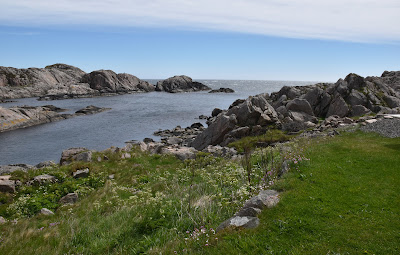 |
| Some pretty stunning views. |
 |
| Some pretty cold winds... |
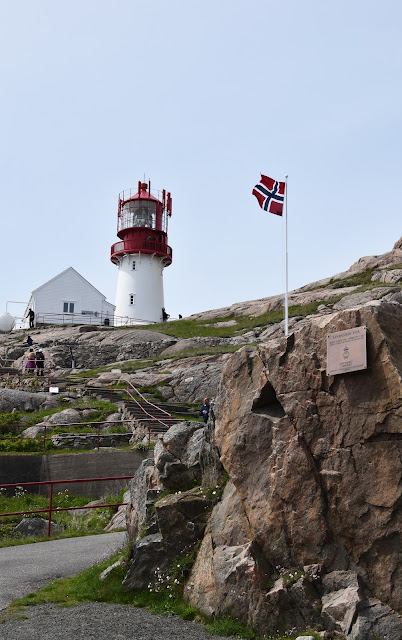 |
| Many steps lead to Lindenes Fyr... |
 |
| Everything is built on solid rock... |
 |
| Some of the many tunnels and bunkers at Lindesnes Fyr |
As I'm a little slow on the stairs, and as I also love to just stop and take in the amazing views, Pete Maria and the boys went ahead..Rising above the cape is the evocative Lindesnes Fyr, a classic lighthouse, and as we climbed higher towards the lighthouse, the rugged coastline was fully put into it's right perspective. The views were amazing and there was massive rock coastline for as far as the eye could see...
 |
| Still many many steps to go... |
 |
| More picnic areas as you climbed higher up toward the lighthouse. |
 |
| Nearly there.... |
The lighthouse has 350 years of history. It was lit for the first time in 1655 using coal and tallow candles to warn ships off the rocks. The current electrical version, built in 1915, is visible up to 19.5 nautical miles out to sea.
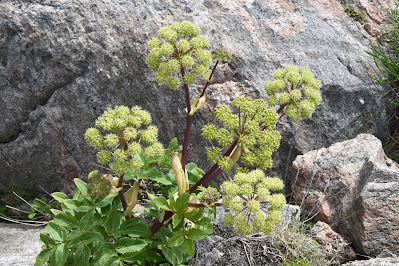 |
| This was an unusual plant.... hadn't seen one of these before... |
 |
| Wildflowers in abundance.. |
 |
| Pete and Maria and the boys have reached the top of the lighthouse.. |
At that time parts of Norway were under Danish influence. And so it was the Danish King Fredrik III who allowed a beacon on Lindesnes on July 18, 1655. The operation was financed from the port tax between Bohuslän in Sweden and Bergen in Norway. It was supposed to go into operation the following autumn, so four ships were sent out to bring building materials and coal. But the journeys took a disproportionately long time and so it was initially decided on a temporary solution.
A wooden tower with three levels was built, lead glass was placed in the walls and 30 candles were lit. But the light was too weak to be seen at all when visibility was poor. So they relied on the originally planned coal fire, but even this light could not be seen far enough. The first beacon on Lindesnes had thus failed and its termination was sealed after just one year of operation.
Pete and Maria were long down by the time we climbed to the top of the
Lighthouse... stepping inside the lighthouse, we found photos and information about the previous lighthouses that once stood there. There was also plenty of photos of other notable lighthouses from around Norway as well. The steep and narrow stairs led you up to the viewing platform, located just below the beacon.
While
the building itself isn't especially tall, it is located on top of the rocks so
the coastal views were absolutely wonderful and so worth the climb up the steep stairs inside the lighthouse.
Southern Norway enjoys the best weather in the country, especially during the summer months. The daily mean temperature doesn't drop below freezing (0°C) at any time during the year.
We were very
fortunate to be here when the weather was particularly good. It was a very sunny and clear day and this really
allowed us to see the coastline in it's pristine best.
Although
we were told that it is equally impressive on a very moody raining
howling wind day also as it is then that you get to experience the
ferociousness of the ocean as the waves can whip up to 25 metres high..
I am sure it would be very impressive to see...
Pete and Maria were long down by the time we climbed to the top of the Lighthouse... We were able to see them from the top as they explored the rock below.
An important weather station is installed on the site, which records readings on temperature and rainfall. It has done so since January 1863. The Lighthouse keeper not only had to keep the light's burning in the Lighthouse, but were also responsible to to report around the clock observation of the weather for the Norwegian Meteorological Institute. The strength and direction of the wind is measured, along with air temperature, water temperature, atmospheric pressure, rainfall and snowfall. In addition, visual observation of the cloud stratosphere and sea swell are also included.
 |
| Amazing views of a very rocky coastline.. |
 |
| Weather station is also situated here at Lindesnes Fyr... |
 |
| The gun battery remains from World War II |
 |
| More gun battery remains from World War II |
 |
| Weather station |
We also found the old German fortress remain from the 2nd World War very interesting. The gun battery was begun by the German army in 1841. The four French guns, from 1913, had a caliber of 105mm and a range of 12 kms.
The bunkers and trenches are still around the lighthouse today and are a wonderful drawcard especially for younger folk visiting.
 |
| Pete and Theo set off to explore the trenches and bunkers... |
 |
| Poppy and Theo checking out the telescope |
 |
| More amazing views out to sea this time.. |
 |
| Theo loved checking out the tunnels and bunkers... |
Theo had already explored quite a few of the tunnels and bunkers, before we had even got back down from the lighthouse and was super keen to take Steve around and show them to him.
 |
| Peter checks out the weather station |
 |
| Lot of tunnels and trenches around the lighthouse precinct. |
 |
| We spied Maria below... |
The Germans really did make substantial changes to this important lookout. The trenches and passages which were built for their fortification remains today and really add to the history of the Lighthouse..
British aircraft sunk the German submarine U 319 in July 1944. The submarine was spotted by a British B-24 Liberator aircraft southwest of Lindesnes lighthouse. All 50 onboard were killed.
 |
| Entrance to one of the bunkers |
 |
| The trenches are still in evidence today... |
 |
| Theo exploring one of the bunkers |
 |
| They found some other interesting characters within the bunkers also. |
 |
| Tunnels carved through the sheer rock. |
 |
| Maria and I below... |
 |
| Another entrance to one of the bunkers... |
 |
| Some pretty remarkable engineering feats when you think these bunkers were blasted out of sheer rock... |
 |
| One of the original lighthouses. |
It was fascinating to read the story and you couldn't help feel quite sad about the outcome....On the morning of November 27, 1944, a reconnaissance plane from the British aircraft carrier HMS ‘Implacable’ spotted a German maritime convoy between the islands of Tjøtta and Rosøya off northern Norway. The large transport ship ‘Rigel’, escorted by several patrol boats, was sailing along the coast in a southerly direction towards Trondheim.
This was a quarry too good to be missed. Fairey Barracuda torpedo and dive bombers took to the sky from the carrier’s deck, accompanied by fighter planes. None of the British military could imagine at the time what a disastrous mistake they were making.
Before
the start of World War II, the Rigel had served in Norway as a cargo ship.
After the country’s occupation by the Germans in 1940, it was requisitioned for
the needs of the German army and started being used for carrying troops and
military materiel.
The Rigel set off on its ill-fated November voyage with a completely different cargo, however. On board, guarded by almost 400 soldiers, were 95 German deserters and more than 2,200 prisoners-of-war - largely Red Army servicemen, as well as Yugoslavs and Poles.
Temporarily put to use as a floating prison, the ship was completely unsuited to this role. People were being kept in the cargo holds like penned cattle - in terribly overcrowded conditions and without ventilation or access to elementary sanitary facilities.
The British pilots who discovered the ship knew nothing of all this. They believed they had stumbled across a German troopship carrying reinforcements for the German forces in Central Europe.
The poorly defended convoy stood no chance against the British aircraft. The Rigel sustained several direct hits and started rapidly sinking. The bombs destroyed the stairways in the cargo holds, condemning hundreds of people to a certain death.
Anyone who somehow managed to get up on deck ended up scuffling for the ship’s few items of life-saving equipment. “It was a life-and-death struggle. I was young and strong and fought for my life,” recalled Asbjørn Schultz. Arrested for getting into a fight with a German soldier, he was one of eight Norwegian prisoners on the Rigel and the only one to survive.
People were burned alive in the flames or drowned in the freezing water. “The sea and air were icy. The British continued to fire on those in the water and those on the life rafts,” Schultz said.
The Norwegian himself managed to get to the deserted island of Rosøya, which lay a few hundred meters away, on one of the life rafts. His companions on the short journey were a German soldier and a Soviet prisoner-of-war. On reaching dry land, each of them went their separate way.
The
Royal Navy’s mistake cost almost two-and-a-half thousand lives, the majority of
them Soviet prisoners-of-war. In total, 267 lives were saved, largely thanks to
the fact that Heinrich Rhode, the Rigel’s captain, managed at the last moment
to run the sinking ship aground in shallow water off Rosøya.
For a long time, the bodies of the Rigel’s unfortunate passengers washed ashore or were caught in the nets of local fishermen. For many of them, the sunken ship itself had become a mass grave. Its prow was visible above the waves near the lifeless island for several decades. The remains of the dead were only retrieved in 1969 and buried at a military cemetery on the neighboring island of Tjøtta.
After checking out the display and reading all about it, we decided to head on down to the Museum and Cafe. The boys still hadn't joined us but I was keen to find a seat.
Built into nearby rocks, a small museum tells the story of the development and history of the lighthouse over the years. Inside you'll find items including a former beacon.This place has everything that can be associated with a lighthouse – exhibitions in the individual buildings, a museum shop, and a small cafe.
There are actually two beacons on show in the museum, because the predecessor from 1822, which served here until 1915, is in the immediate vicinity. Then it was replaced by today’s lighthouse Lindesnes fyr.
Maria and I sat and watched a very interesting video about the lighthouses in Norway in the Fjellhallen, the multi-purpose theatre that is also used for concerts.
 |
| The Lighthouse lens |
The boys arrived just as the movie was ending and they were keen to grab a drink and something to eat. We had promised the boys an ice-cream and Steve grabbed us a hot drink. Maria lined up for waffles with strawberry sauce and it looked amazing...
 |
| Enjoying a treat in the Cafe.... |
The boys were getting a little whingy by the time we finihed our snack, so Pete and Maria decided that they were head straight home with them. Steve and I on the other hand thought that we would take our time and do a little bit of exploring off the beaten track on our way home...We saw a sign to a place called Lillehavn, so thought that we would drive the five kilometres from the main road and check this little fishing village out...
After chatting to the guys for a while, Steve then wandered into the village it self. Today there is nothing left of the original fishing port, the old buildings have been demolished and over the years a small, pretty holiday idyll has emerged, which is popular with Norwegians and tourists alike. However, it has remained without much hustle and bustle.
This little village is an ideal holiday destination today and still very popular with those that love fishing. We watched a couple of keen fishermen head out and Steve was feeling a little green with envy. We had parked at the Jetty which is only about 80m away from the village. It did seem that all the houses in Lillehavn were built onto the water..
We really did fall in love with this gorgeous little place and wished we had more time to explore it more...
 |
| Checking out the crabbing pots in Norway.. |
 |
| We were wondering if these were fish farms down there... |
 |
| Boat sheds were built along the water all the way along this highway.. |
A boathouse, (in Norwegian «naust»), is a common landmark along the Norwegian coast. Traditionally built as a place for storage of boats and fishing equipment, the naust used to be functional buildings with simple materials.
We came across this massive GE Healthcare Factory on our drive home. We had no idea that GE was associated with Healthcare. We had only heard of them as being involved in mainly white goods used within our homes.
There are two big GE Healthcare facilities in Norway in both Oslo and Lindesnes. Their factories produce basic substances for contrast agents used in medical imaging and they are produced in one of the world's most modern and efficient processing facilities.
There factory in Lindesnes is one of the
worlds biggest X-Ray contrast media factories, and it is located in a beautiful natural scenery setting.
 |
| GE Heathcare Factory in Lindesnes Norway... |
Our next detour was to drive into Båly Marina, which is situated at the entrance to Spangereid Canal in Lindesnes. It's idyllically located on the lindesnes peninsula, at the entry of the Spangereid Canal.
The marina is
in walking distances to grocery stores, post office, gas stations and
the beautiful beach Kråkeviga.
At the marina there are several businesses, for boating and fishing, art galleries and cafès. "Garnbua" sells fishing equiptment and yarn, and at "Jentan på Båly" you can get fresh fish and seafood, lunchfood and soft ice cream.
 |
| Again we saw lots and lots of the little boat sheds here as well. |
The real attraction of the area though is the restaurant "Under" as it is located just a stones throw away from the Marina.
The building itself is an architectural gem. It is reminiscent of a rock formation that is rising out of the sea; almost like a kind of art installation. The award-winning architect firm, Snøhetta, designed the spectacular building which was first opened in 2019. It is the only underwater restaurant in all of Europe...
Half-sunken into the sea, the building’s 34-meter long monolithic form breaks the surface of the water to rest directly on the seabed five meters below. The structure is designed to fully integrate into its marine environment over time, as the roughness of the concrete shell will function as an artificial reef, welcoming limpets and kelp to inhabit it. With the thick concrete walls lying against the craggy shoreline, the structure is built to withstand pressure and shock from the rugged sea conditions. Like a sunken periscope, the restaurant’s massive window offers a view of the seabed as it changes throughout the seasons and varying weather conditions.
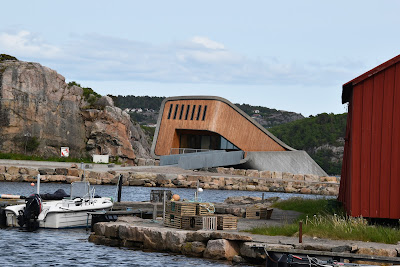 |
| Under.... Europe's only underwater retaurant. |
When you step into the restaurant, your unique undersea journey begins. Here you can descend all the way to a depth of five metres without a diving suit. Just walk down the stairs. At the mesanin there is a bar with a relax area where guest can sit before and after the meal.
Down in the restaurant, the notion of an "ocean view" takes on a whole new meaning. There, a huge glass wall will give you an unique insight into the bustling life in the sea (Skagerrak) outside.
You will get to watch all sorts of fish species swim by, depending on the time of year. Normal fish species in this area is pollack and cod, colourful wrasses, urchins, crabs, lobsters in gladiator battles, spiny dogfish, and even seals have been oberved outside the window along with distinctive seaweed and kelp in the changing seasons... And you can see a live performance of the roaring, stormy sea when nature is in turmoil.
 |
| Large glass wall in the restaurant below the sea.. |
 |
| boats moored at the Båly Marina - Norway |
Our next stop was at a little place called Furuholmen. It looked to be a real little tourist hot spot almost like a little island. Apparently it ha been a well known and beloved holiday destination in Norway for over 40 years and there are lots of attractive little holiday houses in this charming little area of Norway.
Most of the houses have a panoramic view of the ocean and archipelago and all are close to jetties, bathing coves and swimming beaches.
Boats can also be hired as part of the accommodation rental package and there are a range of holiday activities, suitable for all ages, in the area.
Some times the drives we go on are so beautiful that you wish that you could do it all over again but there is never enough time. This is my third visit to Norway now and I can honestly say, I just love this country. Everything about the place is beautiful and I always wish that we had more time to spend there...
By now we were back in Vigeland and we made the turn to head for home...
 |
| One of the statues in Vigeland |
This road was now becoming very familiar to us but each time we traveled over it, we found new things and places to admire. The houses were all very similiar, built of wood with a beautiful backdrop of mountains and fir trees.
It was after 6pm by the time we arrived home. Today the tulips near our front door were all out in full bloom. I just love tulips and if we lived in a cooler climate, I am sure they would be one of my most favourite plants and would probably grace my dining room table on a regular basis. They were so beautiful thought that I just had to photograph them.
 |
| Beautiful tulips |
 |
| The colours are stunning.... |
By the time we got in, Pete and Maria had made a good start on our dinner. The boys were bathed and ready for bed, it had been a long day out in the fresh air and sunshine for them. We have honestly had the best day. Lindernes Fyr was definitely worth the visit, but the drive there and back were absolute highlights of the day. I think we are planning on having a quieter day at home tomorrow...
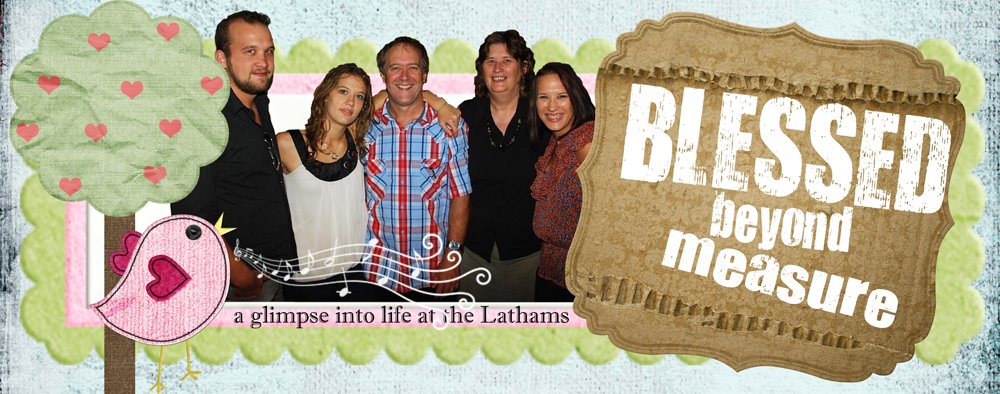
























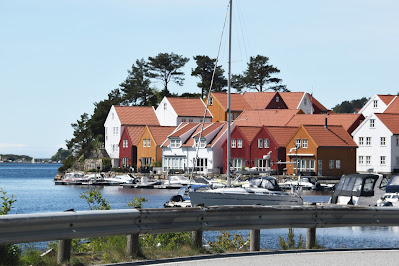





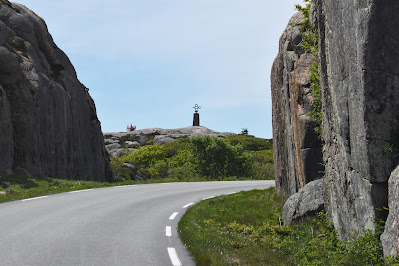



























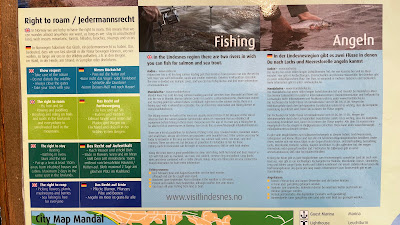




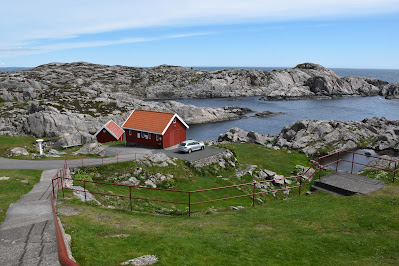

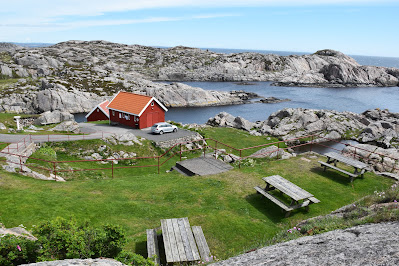







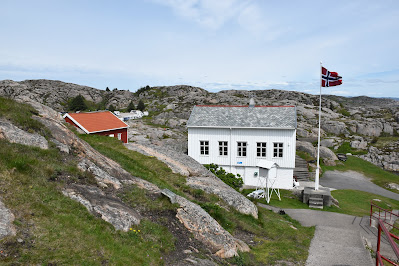





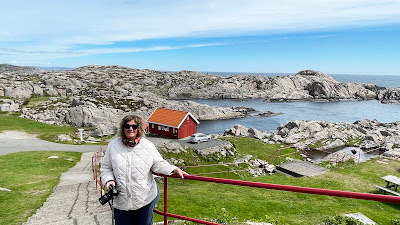







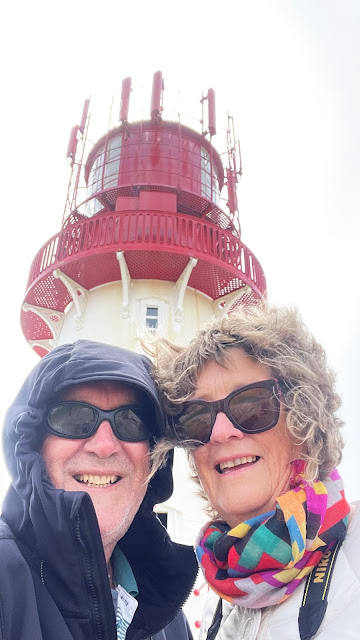














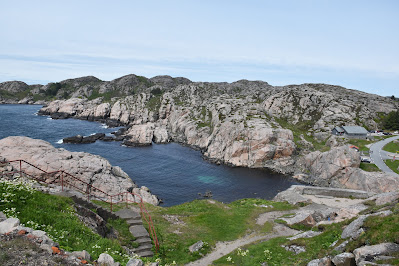

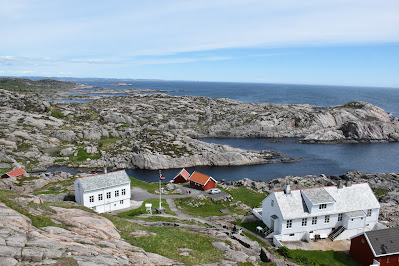


















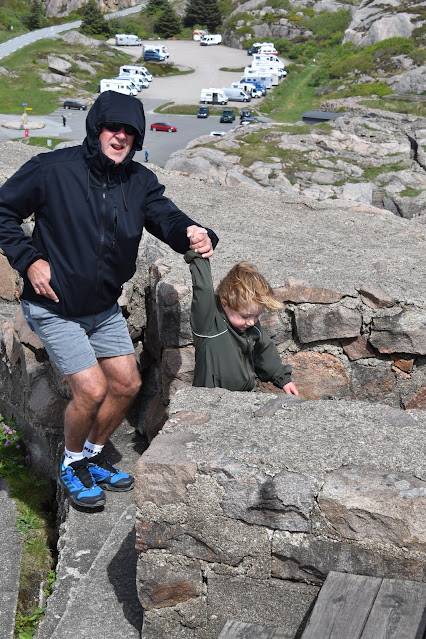






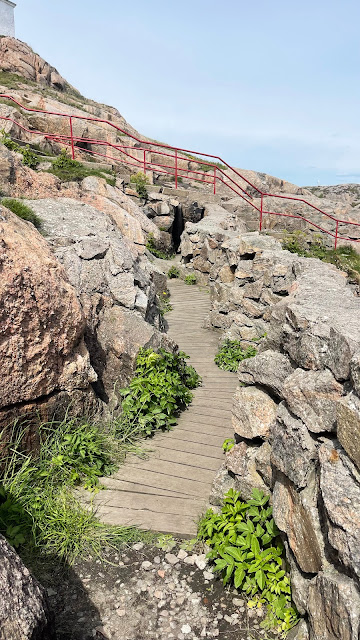






























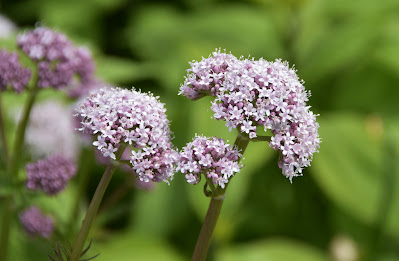












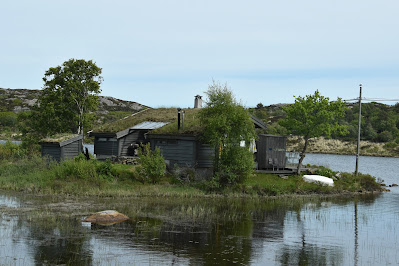





























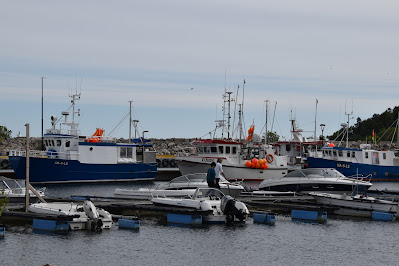









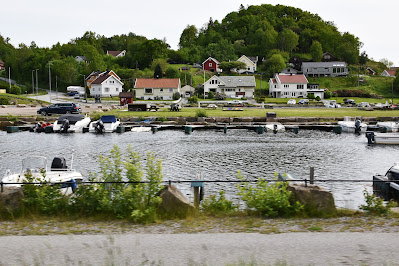





















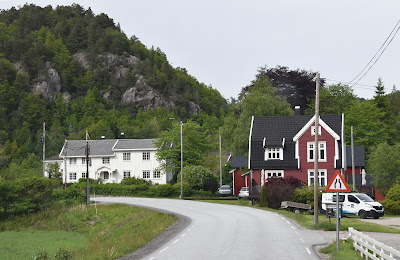























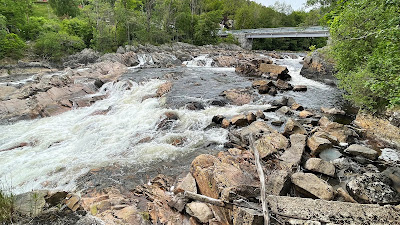




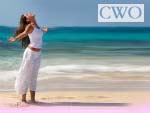
0 comments:
Post a Comment